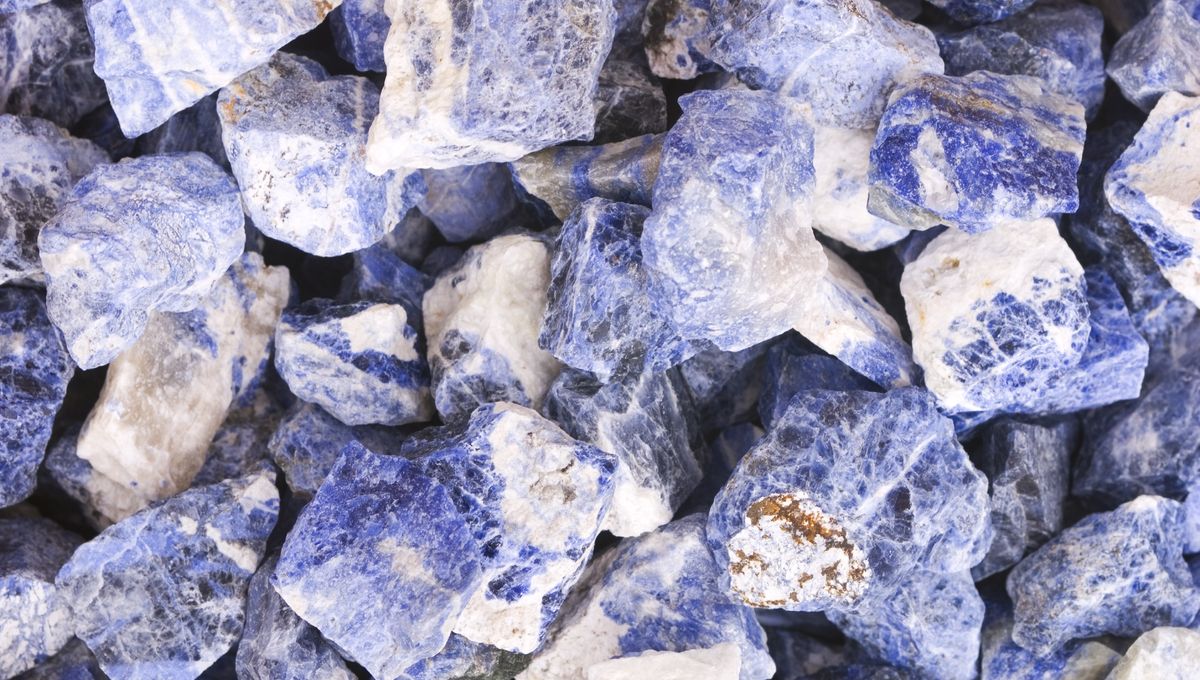
Colorful sand is something many of us played with as children, but while we poured artificial hues into glass bottles, there is plenty of natural variation among sand out in the wild. Iceland’s black sand beaches are a tourist highlight, Alaska’s jewel sand is stuffed full of aesthetically pleasing minerals, but in Namibia, you can stumble across bright blue sand.
Blue is rare in nature, with fewer than 10 percent of the world’s flowering species capable of producing the color, but in rocks, it can arise as sodalite. This rock-forming mineral is found in igneous rocks that crystallized in magma rich in sodium (hence its name, which is derived from the Ancient Greek for “salt stone”).
Sodalite contains sodium, aluminum, silicon, oxygen, and chlorine and can be uniform in color or stripes to look like a stormy seascape set in stone. Its appearance makes it a popular choice for rock tumblers and jewelers who will often smooth out its edges to create a shiny surface.
It forms rocks but in areas where sodalite is common, larger deposits may be the result of human activity as sodalite mining grinds up the mineral to a sand-like size. Sodalite is found across the globe, including the US, Canada, Russia, and Greenland, but nowhere boasts more than Namibia.
Understanding where natural sand comes from can go some way to explaining why it appears in different colors in different regions. Erosion from wind and waves are to thank for natural sand as they can bash up larger pieces of rock until they tumble to the seafloor as the tiny specks that like to get everywhere when you visit the beach.
As a result, natural sand can come in just about any color of rocks that are present in a specific region. In Namibia, a combination of mining and erosion means that you can find sodalite sand among natural samples, but as of yet there hasn’t ever been enough sodalite in one place to make an entirely blue beach.
The bizarre but beautiful Alaskan sands also contain some blueish specimens but these are the result of glauconite, an iron potassium phyllosilicate mineral. Here, the minerals olivine and iron oxides also give rise to green and orange sands respectively.
Perhaps the weirdest colorful beach can be discovered in California, where at Fort Bragg the smoothed-out shards of glass and pottery have created enough artificial pebbles to line the entire shoreline. These unusual stones are the result of the beaches’ historic use as dump sites from 1943 to 1967.
So next time you’re down at the beach, why not pick up a handful and see what color sands you can find? Oh, and if you scoop up a sand dollar while you’re at it, please remember to put it back.
Source Link: This Bizarre Blue Sand Is Only Found On A Few Beaches Globally